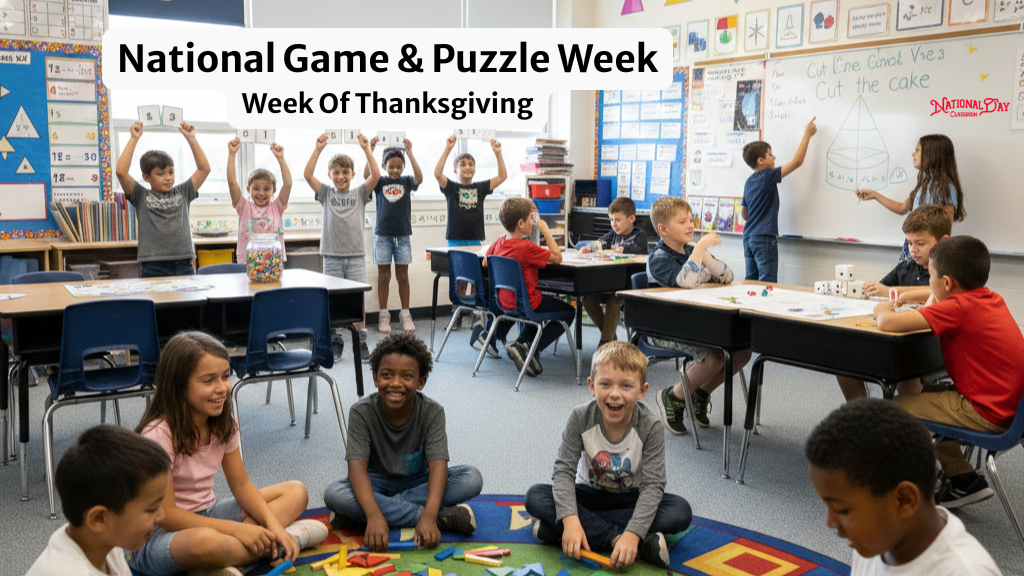
National Game & Puzzle Week: Math Plan
This schedule allows you to focus on a new area of math each day, with activities scalable for 2nd through 6th grade.
| Day | Focus Concept | Warm-Up (10 min) | Main Activity (40 min) | Wrap-Up (10 min) |
| Monday | Logic & Critical Thinking | “Guess My Number”: Use hints like “It’s an even number,” “It’s greater than 10 but less than 20,” etc. (Scale complexity of hints/ranges.) | Tangrams & Pentominoes Challenge: Students use physical or digital shapes to create specific figures or solve puzzles. (2nd grade: basic puzzles; 6th grade: calculating perimeter/area of the resulting shapes.) | Riddles: Share a math riddle (e.g., “What has a face and two hands, but no arms or legs?”) |
| Tuesday | Computation & Fluency | Target Practice: Set a target number (e.g., 25). Students roll 3 dice and must use all 3 numbers with any operation $(+, -, \times, \div)$ to hit the target. | Math Fact War / Speed Dice: Using flashcards (2nd-3rd: addition/subtraction) or 2 dice (4th-6th: multiplication/division), students compete to answer the fact the fastest. | 1-Minute Drill: Quick 60-second test on the day’s focus facts (e.g., multiplication tables for older students, addition for younger ones). |
| Wednesday | Geometry & Measurement | Shape Scavenger Hunt: Find and sketch objects in the classroom that represent specific 2D or 3D shapes (e.g., a cylinder, a right angle). | Tessellation Creation: Students create simple repeating patterns (tessellations) using cut-out shapes or graph paper. Older students can explore transformations (translation, rotation). | Estimation Station: Provide a jar of non-uniform objects (beans, paper clips). Students estimate the quantity and then discuss strategies for estimation. |
| Thursday | Fractions, Decimals, & Percentages | Fraction Line-Up: Give students cards with different representations of fractions (e.g., $1/2$, $0.5$, “one quarter,” an image). They must line up in order from least to greatest. | Fraction/Decimal Dominoes: Pairs or small groups match equivalent fractions to decimals or percentages (e.g., $1/4$ matches $0.25$). | “Cut the Cake” Challenge: Present a visual challenge on how to divide a cake into a specific number of equal pieces using minimal cuts. |
| Friday | Review & Game Day | Review Flashcard Pass: Pass a set of math concept flashcards (vocabulary, formulas) around the room for quick-fire review. | Board Game Creation: Groups create a simple board game based on a math topic covered this week (e.g., a “Geometry Land” game using shape properties). They must write the rules and play-test it. | Prize Puzzle: A fun, grade-appropriate, final logic puzzle or sudoku variant that everyone works on together. |
💡 Differentiation Tips:
- For 2nd/3rd Grade: Keep numbers small, focus on basic operations and concrete manipulatives (like counters, base ten blocks, or simple shapes).
- For 4th/6th Grade: Introduce variables, multi-step problems, abstract concepts (like volume, probability, or algebraic thinking), and encourage using whiteboards to show their work and strategies.